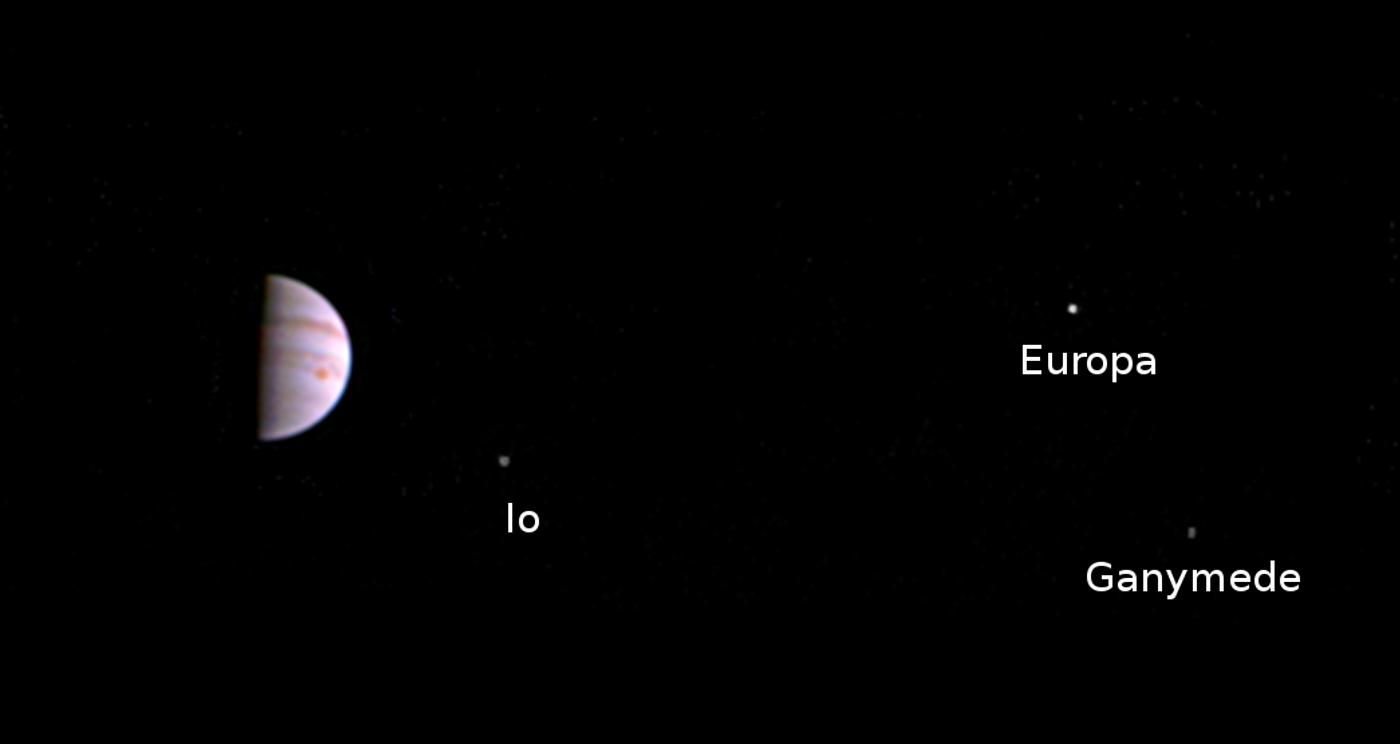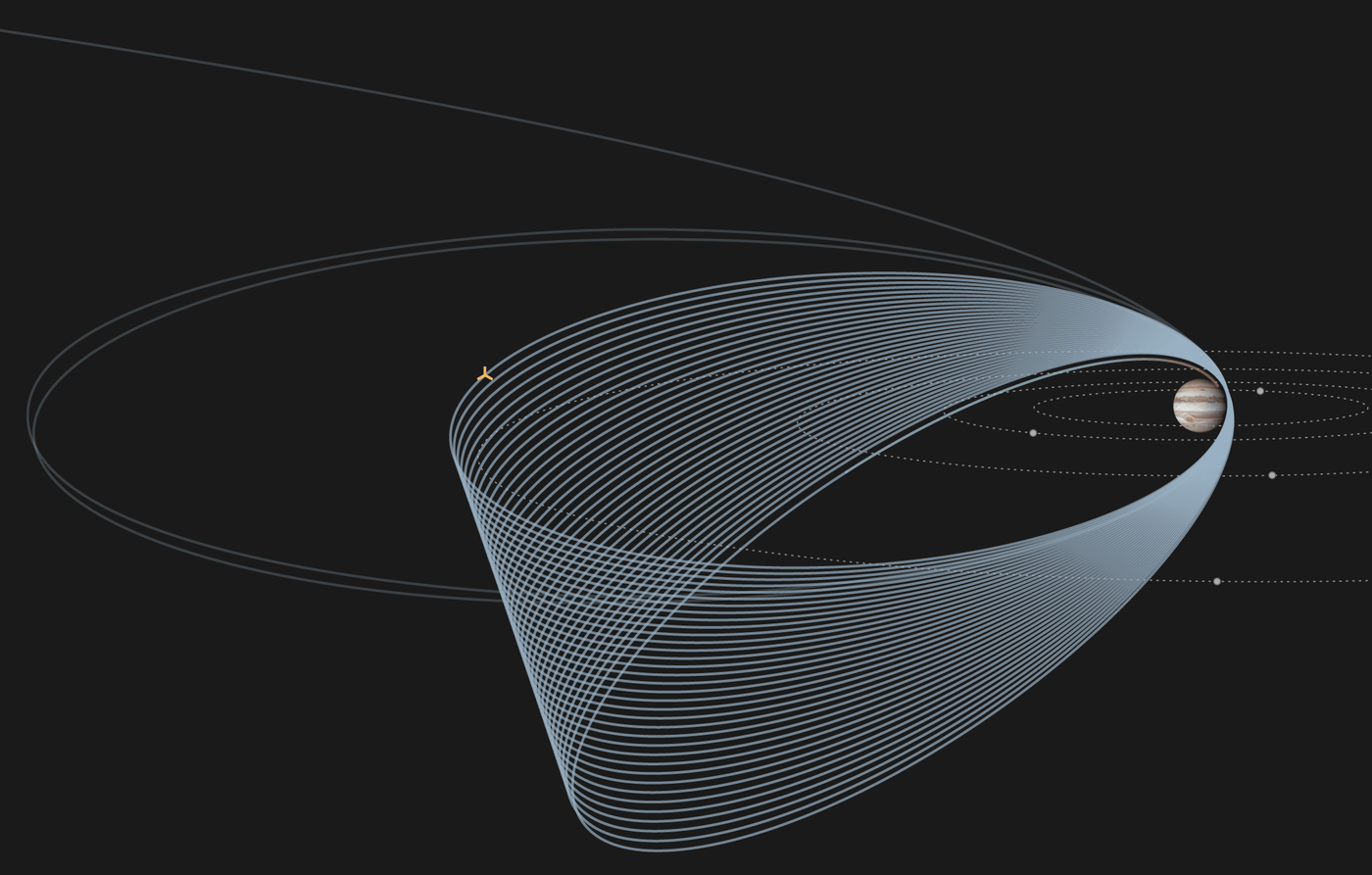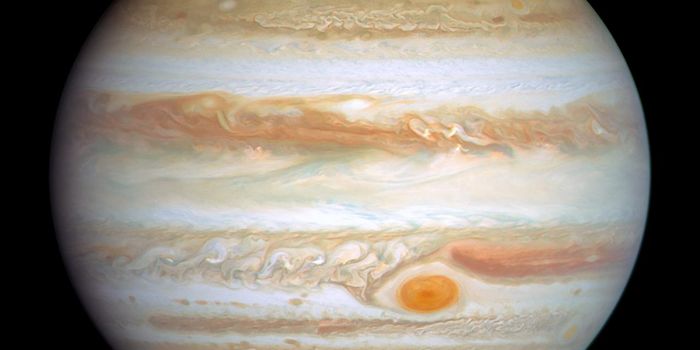NASA Releases First Photo of Jupiter Since Juno Orbit Insertion
Juno has been in orbit around Jupiter, our solar system’s largest planet, for a little over a week following a successful orbit insertion on Independence Day (July 4th, 2016).
Although the spacecraft hasn’t had much of a chance to study the planet just yet, Juno has acquired some photographs of the gassy planet, and NASA has just released its first image from Juno’s onboard JunoCam this week.

Image Credit: NASA/JPL-Caltech/SwRI/MSSS
The photograph shows Jupiter off in the distance, as well as three of the planet’s moons: Io, Europa, and Ganymede.
"This scene from JunoCam indicates it survived its first pass through Jupiter's extreme radiation environment without any degradation and is ready to take on Jupiter," said Scott Bolton, principal investigator from the Southwest Research Institute in San Antonio. "We can't wait to see the first view of Jupiter's poles."
You might be wondering why Jupiter is so far away from Juno in this photograph; after all, shouldn’t the satellite be closer to the planet it’s trying to study in order to learn more about it?
It turns out that Juno isn’t in a perfectly circular orbit around Jupiter. Due to its high gravitational pull, Juno is actually in a slingshot-shaped orbit around the planet, and there are times when it gets really close to it, as well as when it gets really far from it.
The representative diagram below, shared by the New York Times in an infographic, shows how the orbital pattern for Juno will look:

Because of this oddly-shaped orbit, Juno is currently headed away from Jupiter, and it will be a little while before it gets really close again. Juno will orbit Jupiter like this a grand total of 37 times during its operational life.
We will probably get plenty of photographs from the distant pass, but when Juno gets close again, all attention will be put on the spacecraft’s sensors, which will sample Jupiter’s atmosphere to gain information about the atmospheric composition, magnetic fields, and other significant planetary qualities.
Source: NASA, via New York Times








